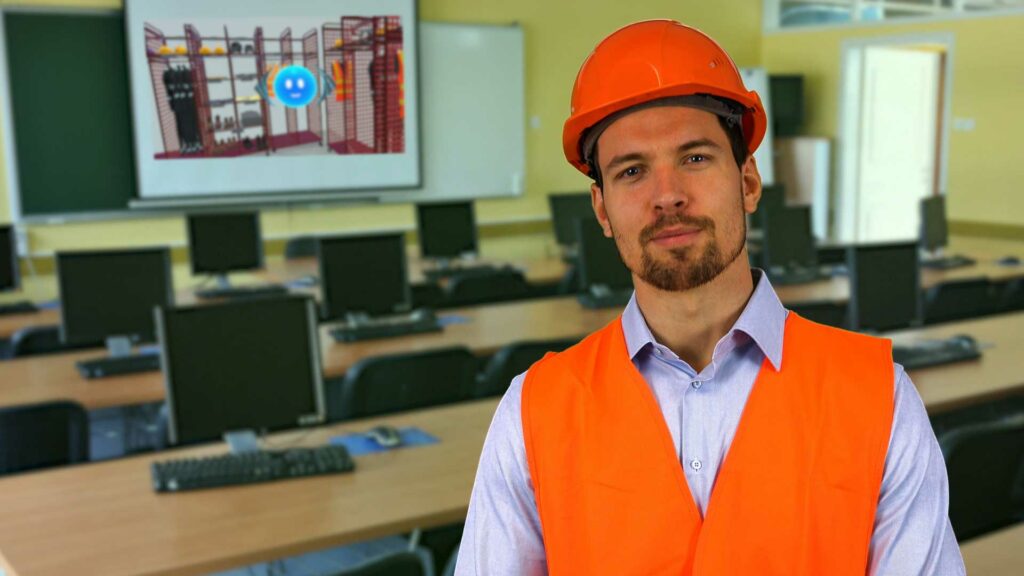What challenges are facing safety trainers?
Safety trainers face unique challenges due to the nature of their work. Some of the challenges facing safety trainers include:
- Ensuring compliance with regulations: Safety trainers need to ensure that their training programs are compliant with relevant regulations and standards. This can be a challenge when regulations are frequently changing or when there are differences in regulations across different regions.
- Addressing language barriers: Safety trainers may work with trainees who speak different languages, which can make it difficult to ensure that all trainees understand the safety procedures and protocols being taught.
- Keeping up with new technologies: Safety trainers need to stay up to date with new safety technologies and equipment to ensure that their trainees are trained on the latest safety procedures.
- Ensuring that trainees retain information: Safety trainers need to ensure that trainees retain the information and skills taught during training to minimize the risk of accidents or injuries in the workplace.
- Managing diverse groups of trainees: Safety trainers may work with trainees from diverse backgrounds, levels of education, and experience, which can make it challenging to create training programs that meet the needs of everyone.
- Balancing practical and theoretical training: Safety trainers need to balance practical and theoretical training to ensure that trainees have a comprehensive understanding of the safety procedures and protocols.
- Ensuring trainee engagement: Safety trainers need to create engaging and interactive training sessions that keep trainees interested and motivated. This can be a challenge when dealing with dry or complex material.
How can technology help?
Technology can be a valuable tool for safety trainers to enhance their training programs. Here are some ways in which technology can help safety trainers:
- Virtual training: Virtual reality (VR) and augmented reality (AR) technologies can be used to simulate dangerous situations and trainees can practice safety procedures in a virtual environment. This can provide a safe and controlled environment for trainees to learn and practice safety procedures.
- E-learning platforms: E-learning platforms can be used to deliver safety training programs online. This provides flexibility for trainees to access the training program at their own pace and on their own time.
- Mobile apps: Mobile apps can be used to deliver safety training content and provide just-in-time training to workers in the field. This can be particularly useful for workers who may not have easy access to training facilities.
- Wearable technology: Wearable technology such as smart helmets, safety glasses, and vests can be used to monitor and track workers’ movements, providing real-time feedback on their safety performance.
- Analytics and data visualization: Analytics and data visualization tools can be used to monitor and track safety performance metrics, providing insights into areas where improvements are needed.
- Collaborative tools: Collaborative tools such as video conferencing and online forums can be used to facilitate communication and collaboration between safety trainers and trainees.
- Interactive training materials: Interactive training materials such as online quizzes and games can be used to make safety training more engaging and fun.
One key growth area is immersive training, but what is it?
Immersive training is a type of training that creates a highly realistic and interactive learning environment that simulates real-world scenarios. It uses technologies such as virtual reality (VR), augmented reality (AR), and mixed reality (MR) to create simulations that allow trainees to experience hazardous scenarios and practice safety procedures and protocols in a safe and controlled environment.
In immersive training, trainees wear a headset or use other devices that create a virtual or augmented environment. The simulation can replicate hazardous scenarios and allow trainees to interact with objects and people in the virtual or augmented environment. This provides a hands-on, experiential learning experience that can increase engagement and retention of safety procedures and protocols.
Immersive training can be used in various industries such as manufacturing, construction, healthcare, and aviation, where safety is critical. It can be used to train employees on hazardous procedures, emergency response, and safety protocols. Immersive training can be a cost-effective way to provide standardized training experiences, evaluate trainee performance, and improve safety culture in the workplace.
How can safety trainers use immersive training?
Immersive training can be a valuable tool for safety trainers to enhance their training programs in several ways:
- Realistic simulations: Immersive training can create highly realistic simulations that allow trainees to experience hazardous scenarios and practice safety procedures and protocols in a safe and controlled environment.
- Increase engagement and retention: Immersive training can increase trainee engagement and motivation by providing an interactive and engaging training experience. This can lead to better retention of safety procedures and protocols.
- Train for rare events: Immersive training can be used to train for rare or unexpected events that are difficult to replicate in real life. This can help trainees develop the skills and confidence needed to respond effectively in these situations.
- Standardized training: Immersive training can provide standardized training experiences, ensuring that all trainees receive the same level of training regardless of their location or trainer.
- Provide cost-effective training: Immersive training can be a cost-effective way to deliver safety training, as it can be used to train large groups of trainees simultaneously without the need for expensive equipment or resources.
- Evaluate trainee performance: Immersive training can be used to evaluate trainee performance in hazardous scenarios, providing feedback on areas where improvements are needed.
- Improve safety culture: Immersive training can help create a safety culture in the workplace by allowing trainees to experience hazardous scenarios and understand the importance of safety procedures and protocols.
In summary, safety trainers are facing challenges such as engaging trainees, delivering effective training in diverse environments, and keeping up with changing regulations. However, technology can help safety trainers overcome these challenges by providing tools such as e-learning platforms, virtual reality simulations, and gamified content that can improve engagement, provide standardized training experiences, and enhance trainee comprehension and retention.


